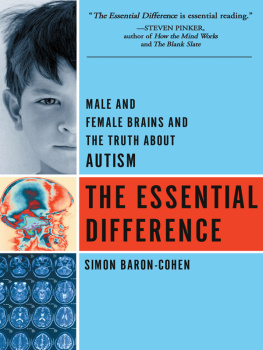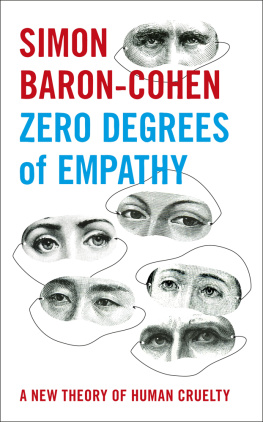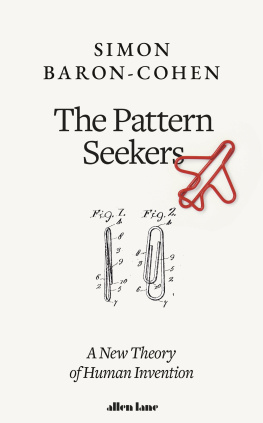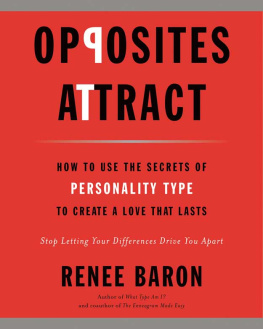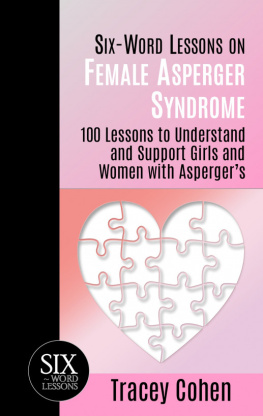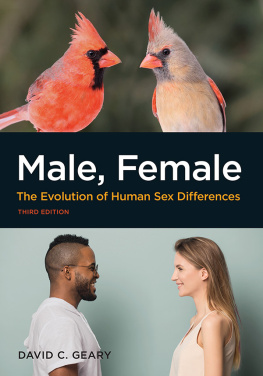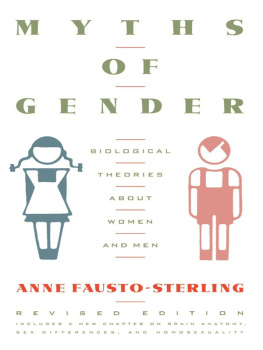. The normal distribution of empathizing skills.
. The normal distribution of systemizing skills.
. A model of empathy.
. The face and mobile presented to newborns.
. Male and female scores in empathizing.
. An item from the Adult Embedded Figures Test.
. Male and female scores in systemizing.
. A model of the male and female brain, and their extremes.
. Male, female, and autism scores in empathizing.
. Male, female, and autism scores in systemizing.
. Male, female, and autism scores on the Autism Spectrum Quotient (AQ).
. What empathizing and systemizing can explain.
ACKNOWLEDGMENTS
Bridget Lindley was the first to believe in my ideas about the essential differences between the male and female mind, and about the extreme male brain as an explanation of autism. She supported me when I dipped my toe into these politically dangerous waters, even during the early 1990s when to raise the very idea of psychological sex differences was risky. Like many people, she recognized such sex differences in everyday life, and persuaded me that most readers would now be open-minded enough to look at the evidence dispassionately.
Many people helped me develop my thoughts for this book. They include my talented research students in recent years: Chris Ashwin, Anna Batkti, Livia Colle, Jennifer Connellan, Jaime Craig, Ofer Golan, Rick Griffin, Jessica Hammer, John Herrington, Therese Jolliffe, Rebecca Knickmeyer, Johnny Lawson, and Svetlana Lutchmaya. They also include my valuable research team: Carrie Allison, Matthew Belmonte, Jacqueline Hill, Rosa Hoekstra, Karen McGinty, Catherine Moreno, Jennifer Richler, Fiona Scott, Carol Stott, and Sally Wheelwright. At the risk of embarrassing her, I owe special thanks to Sally. She first came to work with me in 1996, and was as grabbed by the questions in this book as I was. We have enjoyed a long and tremendously productive collaboration, and much of the research behind this book would not have been possible without her.
Some colleagues and friends have been very supportive. They include Patrick Bolton, Kirsten Callesen, Lynn Clemance, Peter Fonagy, Ian Goodyer, Ami Klin, Chantal Martin, Amitta Shah, Luca Surian, Helen Tager-Flusberg, and Esther Tripp. My clinical colleagues Janine Robinson, Emma Weisblatt, and Marc Woodbury-Smith have also helped me enormously in my attempt to understand the nature of Asperger Syndrome.
Last, but not least, are my collaborators: Ralph Adolphs, James Blair, Carol Brayne, Ed Bullmore, Andy Calder, Tony Charman, Livia Colle, Carol Gregory, Gerald Hackett, Melissa Hines, John Hodges, Ioan James, Mark Johnson, John Manning, Michelle ORiordan, Robert Plomin, Peter Raggatt, Melissa Rutherford, Geoff Sanders, David Skuse, Valerie Stone, Steve Williams, Max Whitby, Andy Young, and Martin Yuille.
Many of the above people gathered new data and tested hypotheses. You will read about some of our discoveries in the pages to come.
I would also like to thank Consulting Psychologists Press, Inc, for permission to reproduce the Adult Embedded Figures Test. The Reading the Mind in the Eyes Test () is based on photographs from commercial sources. The test itself is only used for research and is not distributed for commerical profit. Copyright of each individual photograph cannot be traced from these photo fragments.
I first wrote about the extreme male brain theory of autism in 1997. This book expands these early communications for a broader readership.
The following funding agencies have supported my work during the writing of this book: the Medical Research Council (UK), Cure Autism Now, the Shirley Foundation, the Corob Foundation, the Three Guineas Trust, the Gatsby Trust, the Isaac Newton Trust, the NHS Research and Development Fund, the National Alliance for Autism Research, and the James S. McDonnell Foundation.

